I had expected my new FLIR ONE Pro to arrive next week, but I already received it yesterday. Nice!
So here are some thermal images of my test unit under different loads. You may note that this is the LiFePO4wered/Pi+ version with the battery holder PCB area removed and an external battery connected by leads. That's the worst case for thermal performance as the PCB is the smallest and provides less heat sinking.
I had been running the test unit overnight with a load current of 1.5A powered by a 20V charger, so that's the first set of images I took:
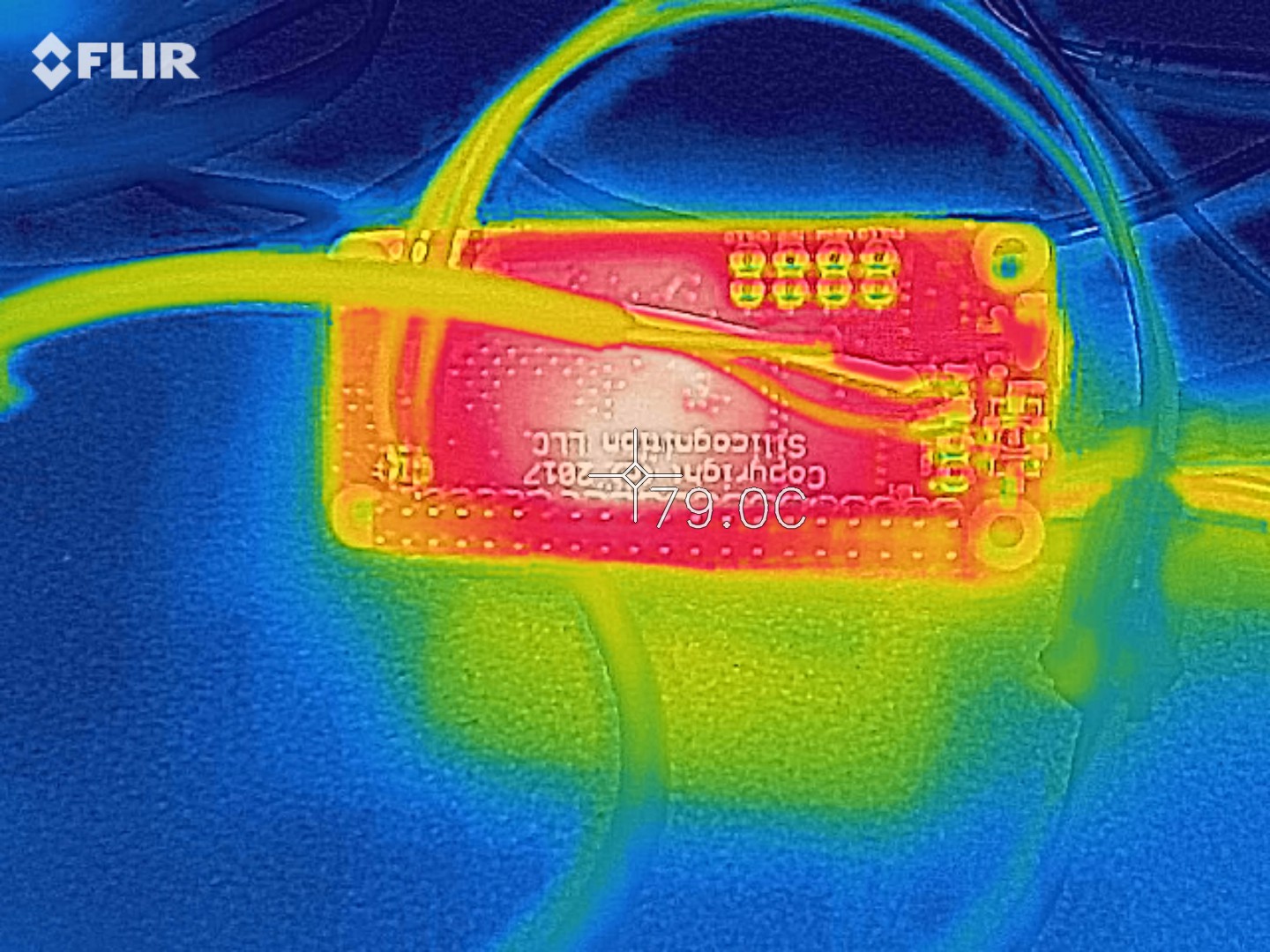
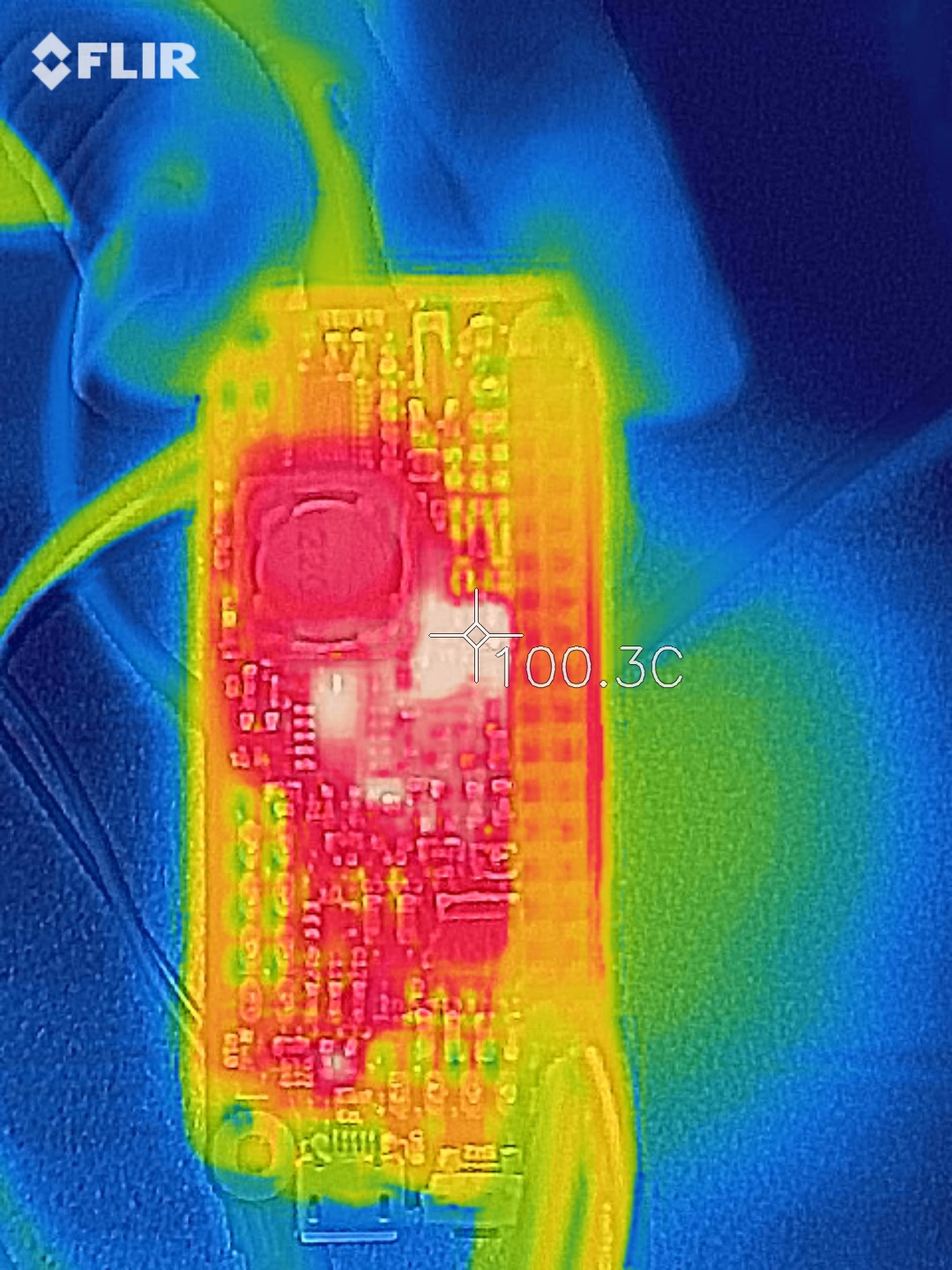
Running at a high input voltage, the charger's power MOSFET and Schottky diode are of course the hot spot. But the hot spot is 20°C cooler at the same load current as my previous prototypes actually--a nice improvement!
Let's crank the load current up to 2A:
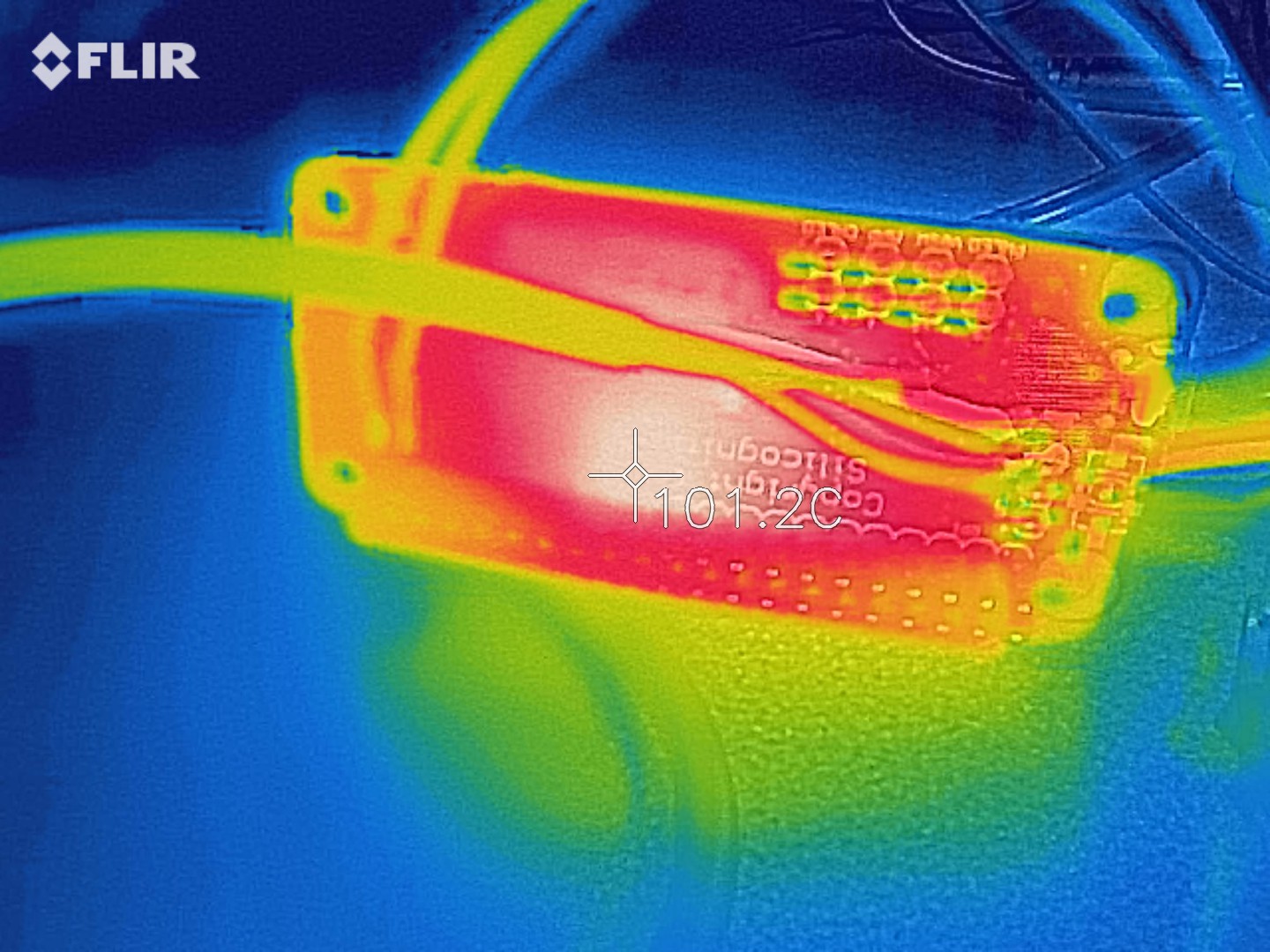

Getting pretty hot, but nothing is going on fire. :) Just a little over the temperature reached by my previous prototypes when under only 1.5A load. Remember, this is without any cooling or heat sink, and I will definitely recommend active cooling when using the device under high load with a high input voltage.
I then switched back to testing with a regular 5V USB charger on the input. I decided to do the 2A (worst case) test first:
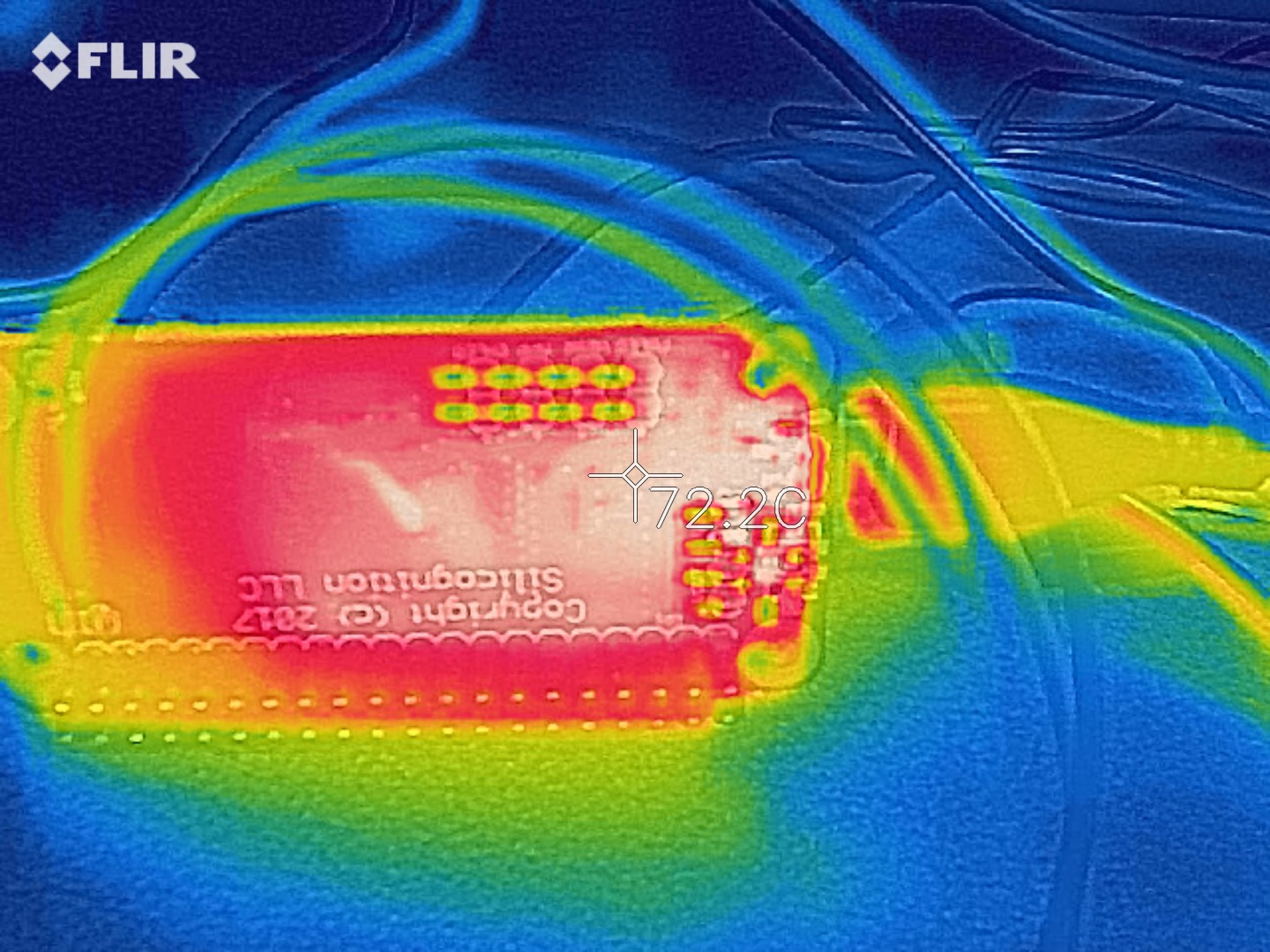
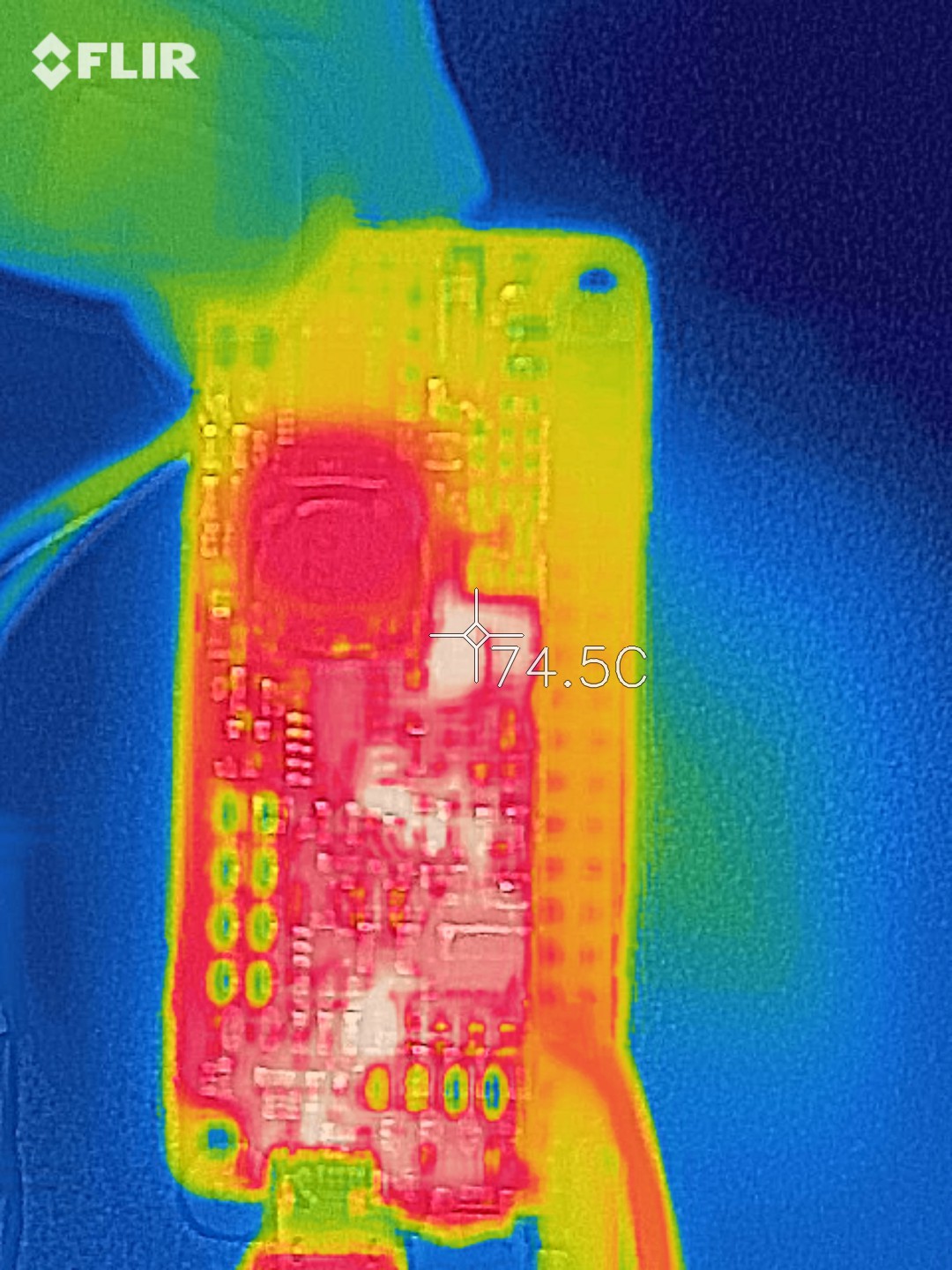

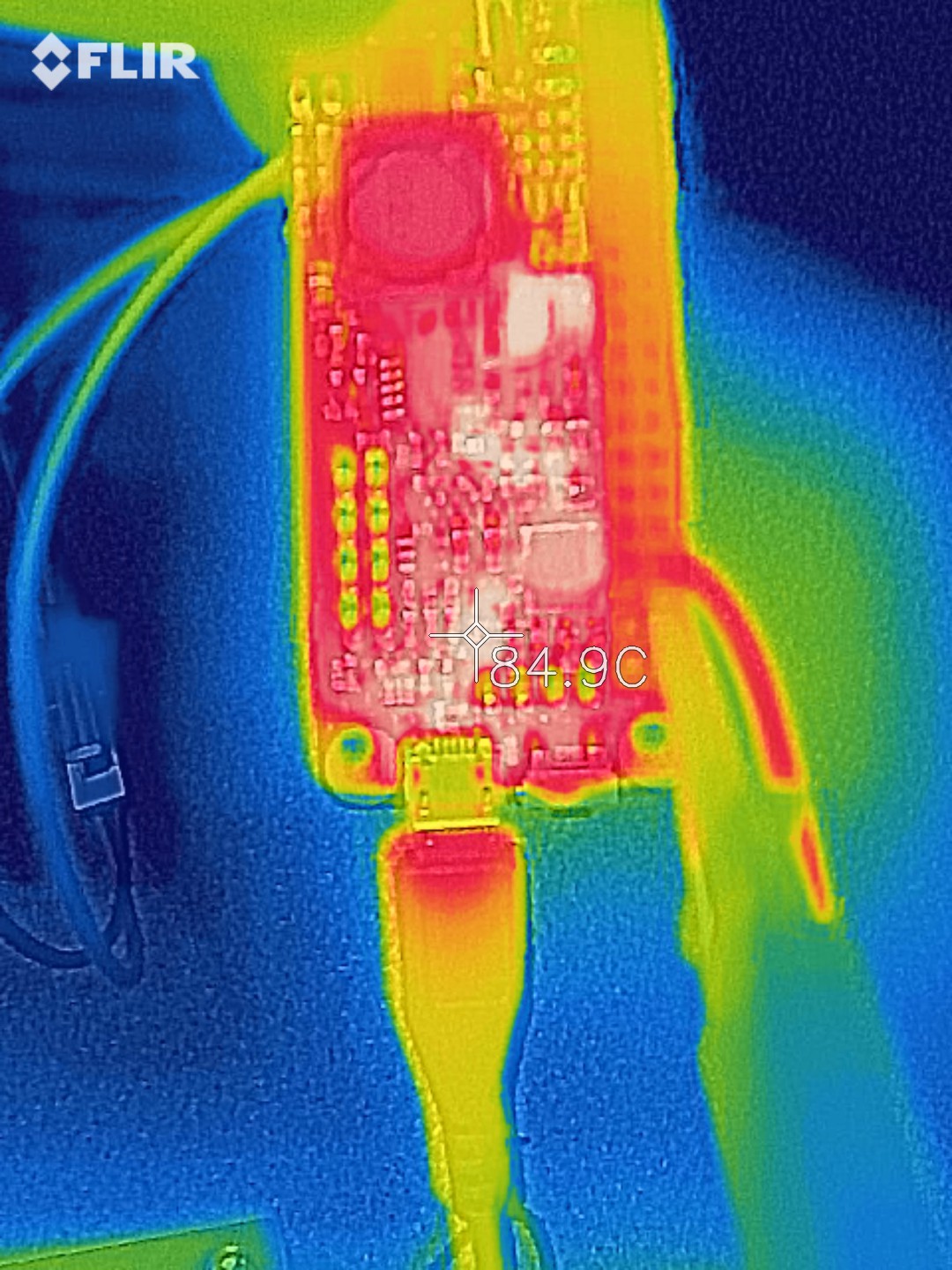
Nice, no extreme heat anywhere! The hottest parts are the SSM3J338R pass transistor and the TPS61236P boost converter. At the lower input voltage, the charger switching stage is not so hot anymore. At this load, dumping 10W into the Pi, I'm pretty certain a well designed system is going to have a fan somewhere to cool things down. But I'm happy to declare that the LiFePO4wered/Pi+ will work as a UPS with 2A load at room temperature without active cooling! :)
But, it still looks pretty hot, doesn't it? Yes, but most people will never have to worry about this kind of load. A Pi 3 running at 100% CPU on all 4 cores only consumes about 800mA. That's 4W, and I have now proven the LiFePO4wered/Pi+ will handle 10W without active cooling. So I hope that will satisfy all the people wanting to power screens, hard drives, SSDs, SDRs etc. from my poor little UPS. :)
To give you an idea of how the system performs when under a "light load" of 1A (= a Pi 3 running full boar):


Hah! Hardly batting an eye.
So I'm calling this PCB revision "approved", on to production!
 Patrick Van Oosterwijck
Patrick Van Oosterwijck
Discussions
Become a Hackaday.io Member
Create an account to leave a comment. Already have an account? Log In.
This is a great analysis.
Are you sure? yes | no